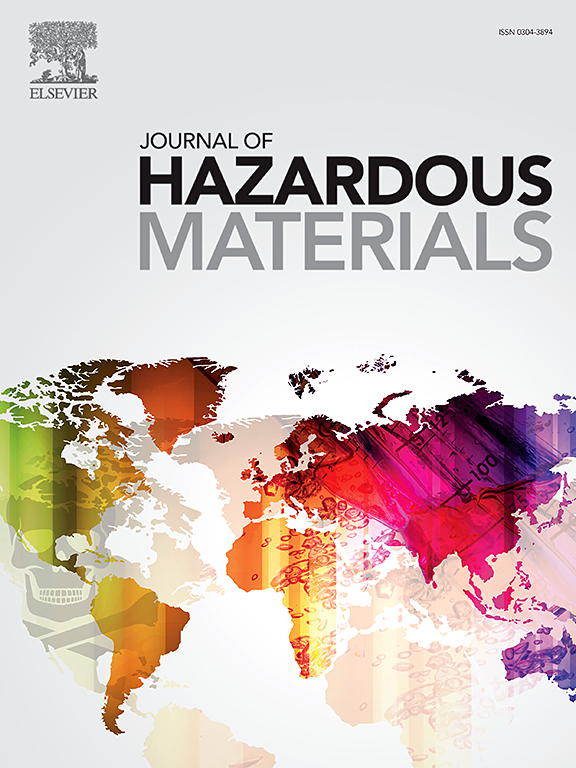High-efficient immobilization of uranium by biochar loaded mixed microorganisms composed of Bacillus and Pseudomonas
IF 11.3
1区 环境科学与生态学
Q1 ENGINEERING, ENVIRONMENTAL
引用次数: 0
Abstract
Microbial remediation has prominent advantages in the prevention and control of uranium-contaminated soil. However, its efficiency in uranium immobilization remains suboptimal. Here, a biochar loaded mixed microorganisms was innovatively constructed, composed of Bacillus subtilis, Bacillus cereus, Pseudomonas putida, and Pseudomonas aeruginosa (3:2:2:3 ratio). Results demonstrate that the biochar-microbial composite achieve an 80.17% reduction in diethylenetriaminepentaacetic acid-extractable uranium (DTPA-U), surpassing single-strain treatments and physical mixtures. Synergistic mechanisms involving adsorption, bioreduction, and biomineralization were elucidated via X-ray photoelectron spectroscopy (XPS) and Fourier-transform infrared spectroscopy (FT-IR). Dominant contributions from hydroxyl, carboxyl, amino and phosphate functional groups were also revealed. 16S rRNA high-throughput sequencing indicates the success colonization of the introduced microbes and their influence on the soil microbial community. This study pioneers a multifunctional biochar-microbe platform for synergistic uranium immobilization, offering actionable insights in situ bioremediation strategies.

由芽孢杆菌和假单胞菌组成的生物炭混合微生物高效固定化铀
微生物修复在防治铀污染土壤中具有突出的优势。然而,它在铀固定化中的效率仍然不是最理想的。本文创新性地构建了由枯草芽孢杆菌、蜡样芽孢杆菌、恶臭假单胞菌和铜绿假单胞菌(3:2:2:3)组成的生物炭负载混合微生物。结果表明,生物炭-微生物复合材料对二乙基三胺五乙酸可萃取铀(DTPA-U)的去除效果达到80.17%,优于单菌株处理和物理混合处理。通过x射线光电子能谱(XPS)和傅里叶变换红外光谱(FT-IR)分析了吸附、生物还原和生物矿化的协同机制。羟基、羧基、氨基和磷酸官能团也占主导地位。16S rRNA高通量测序显示了引入微生物的成功定殖及其对土壤微生物群落的影响。本研究开创了多功能生物炭-微生物协同固定化铀平台,为原位生物修复策略提供了可操作的见解。
本文章由计算机程序翻译,如有差异,请以英文原文为准。
求助全文
约1分钟内获得全文
求助全文
来源期刊

Journal of Hazardous Materials
工程技术-工程:环境
CiteScore
25.40
自引率
5.90%
发文量
3059
审稿时长
58 days
期刊介绍:
The Journal of Hazardous Materials serves as a global platform for promoting cutting-edge research in the field of Environmental Science and Engineering. Our publication features a wide range of articles, including full-length research papers, review articles, and perspectives, with the aim of enhancing our understanding of the dangers and risks associated with various materials concerning public health and the environment. It is important to note that the term "environmental contaminants" refers specifically to substances that pose hazardous effects through contamination, while excluding those that do not have such impacts on the environment or human health. Moreover, we emphasize the distinction between wastes and hazardous materials in order to provide further clarity on the scope of the journal. We have a keen interest in exploring specific compounds and microbial agents that have adverse effects on the environment.
 求助内容:
求助内容: 应助结果提醒方式:
应助结果提醒方式:


